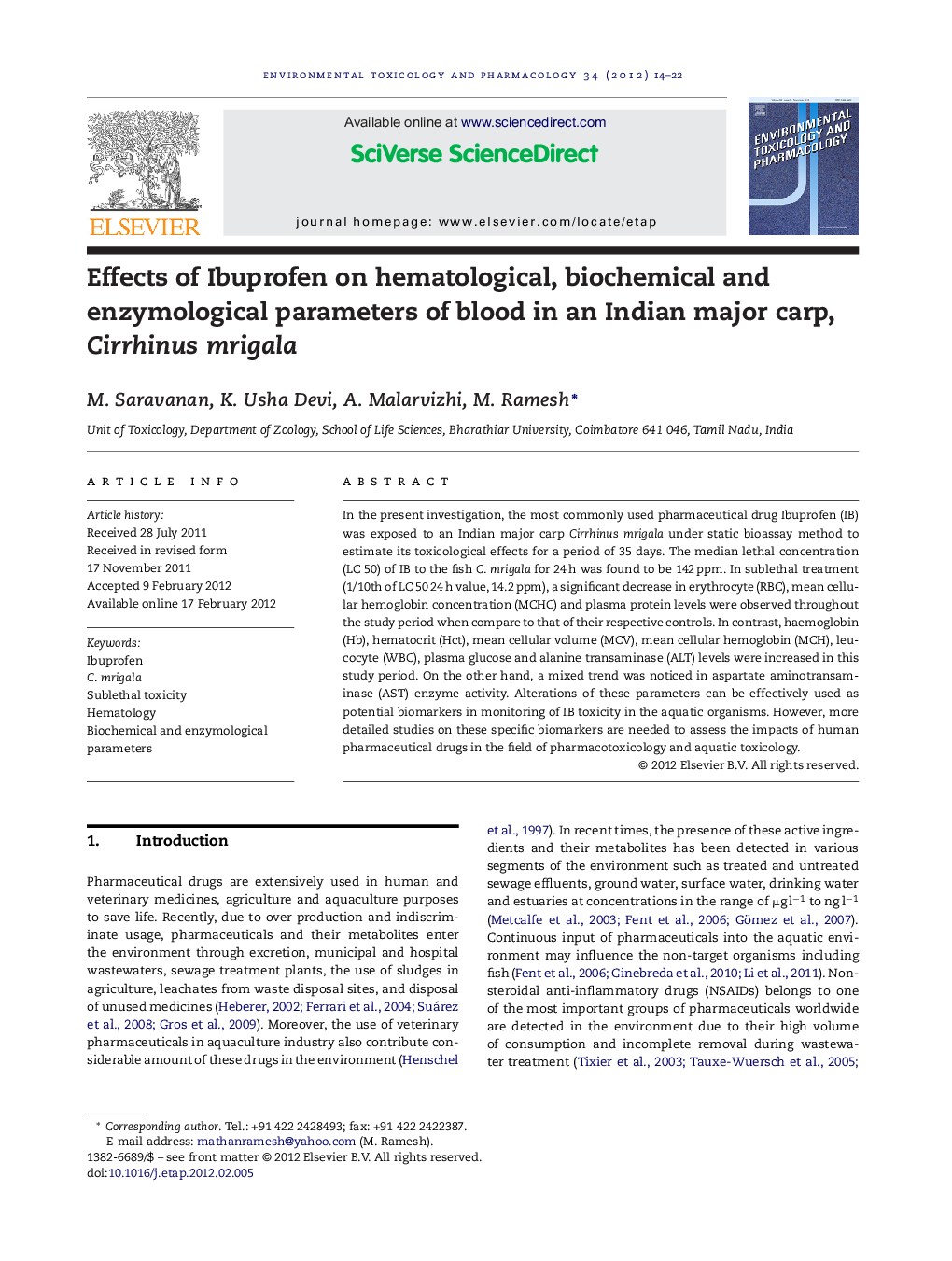| Article ID | Journal | Published Year | Pages | File Type |
|---|---|---|---|---|
| 2583578 | Environmental Toxicology and Pharmacology | 2012 | 9 Pages |
In the present investigation, the most commonly used pharmaceutical drug Ibuprofen (IB) was exposed to an Indian major carp Cirrhinus mrigala under static bioassay method to estimate its toxicological effects for a period of 35 days. The median lethal concentration (LC 50) of IB to the fish C. mrigala for 24 h was found to be 142 ppm. In sublethal treatment (1/10th of LC 50 24 h value, 14.2 ppm), a significant decrease in erythrocyte (RBC), mean cellular hemoglobin concentration (MCHC) and plasma protein levels were observed throughout the study period when compare to that of their respective controls. In contrast, haemoglobin (Hb), hematocrit (Hct), mean cellular volume (MCV), mean cellular hemoglobin (MCH), leucocyte (WBC), plasma glucose and alanine transaminase (ALT) levels were increased in this study period. On the other hand, a mixed trend was noticed in aspartate aminotransaminase (AST) enzyme activity. Alterations of these parameters can be effectively used as potential biomarkers in monitoring of IB toxicity in the aquatic organisms. However, more detailed studies on these specific biomarkers are needed to assess the impacts of human pharmaceutical drugs in the field of pharmacotoxicology and aquatic toxicology.
► Ibuprofen is one of the main pharmaceutical drugs present in the aquatic ecosystem. ► The LC 50 of IB to the fish Cirrhinus mrigala for 24 h was found to be 142 ppm. ► In sublethal treatment (14.2 ppm) RBC, MCHC, plasma protein levels were decreased. ► An increase in Hb, Hct, MCV, MCH, WBC, plasma glucose and ALT were noticed. ► These biomarkers can be used to assess the IB toxicity in the aquatic organisms.
